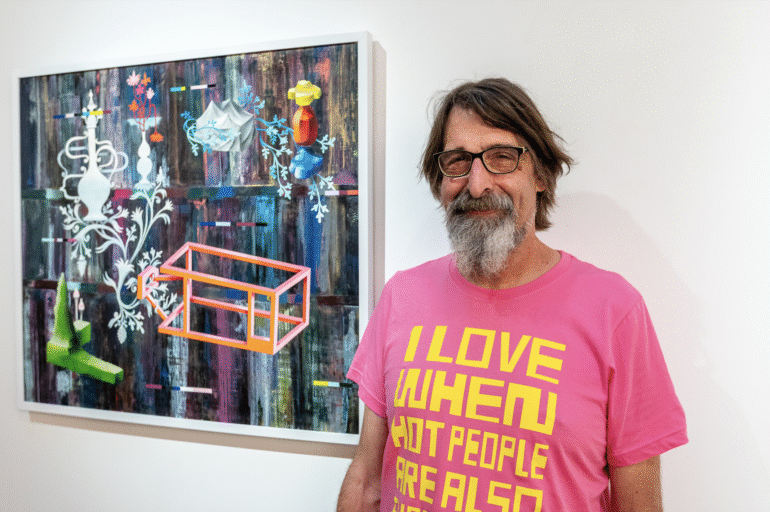Culturalee spoke to artist J. Otto Seibold who recently unveiled a solo exhibition at KP Projects Gallery in Los Angeles. Titled Famous Paintings, the exhibition features a new collection of works by the celebrated artist who has also made a mark on the world of children’s literature, taking it into the digital age with his trailblazing digital children’s books illustrated in his inimitable offbeat style.
J. Otto Seibold’s new series of paintings created for KP Projects present his unique and quirky visual vocabulary and capture the chaos of contemporary life with hyper-flat landscapes and symbols familiar from life such as vases, botanicals and icons familiar from popular culture.
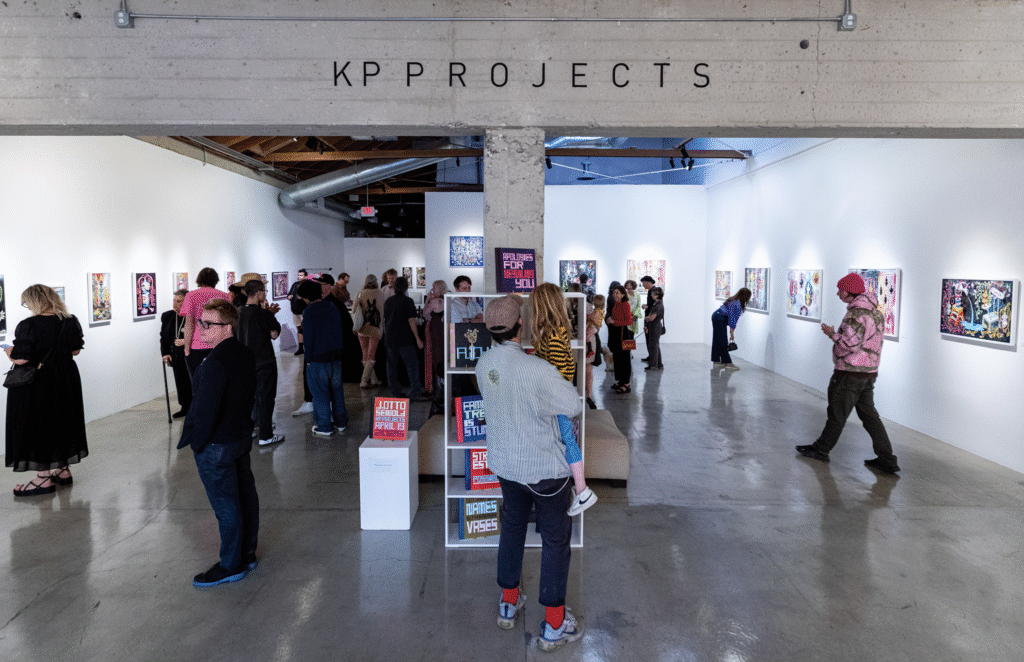
Can you tell us about the concept or inspiration behind the exhibition at KP Projects and the reason for the title Famous Paintings?
The last year and a bit have been incredibly hard to process. I start my day with coffee and live-streamed atrocities from the comfort of my art shack. Painting becomes a refuge, narrowing my focus to decisions about colors and shapes. That disconnect—between the chaos outside and my work—is deep, but it’s what I do. As for the title, Famous Paintings came from my daughter, Theadora. I tried to come up with something “better,” but in the end, its absurdity stuck, and I embraced it.
Do you feel a connection between your visual style and the cultural energy of Los Angeles?
All the work was created in Oakland, where I live. A savvy response would be, “Yes, and here’s why,” but honestly, my connection to L.A. is more indirect.
How did the space in Los Angeles influence the way you curated or displayed the work?
My gallery, KP Projects, handled all of that well. I trusted Merry and Jessica’s vision for the show, and I was right to do so.
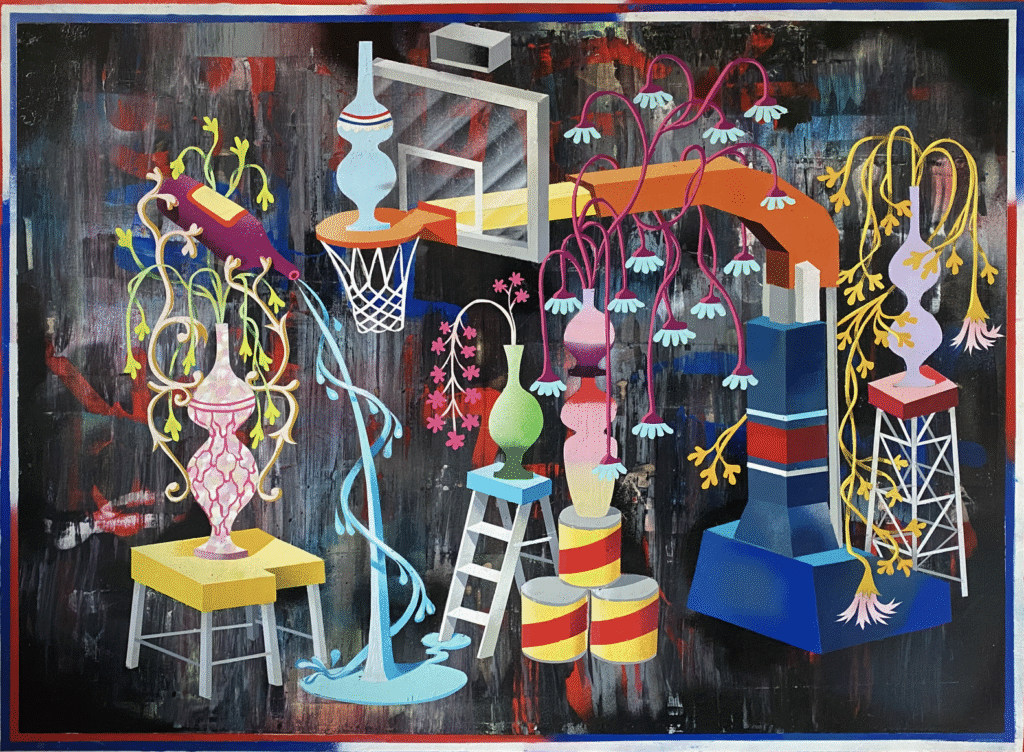
Are there any pieces in the show that are particularly personal or that mark a new direction for you?
A lot of the paintings include the word “FUCK,” which was a direct response to feeling helpless while consuming the news. I joked that years from now, I’d look at these works and know exactly when they were created. That said, the “other bookend” to this moment hasn’t shown up yet. Until then, “FUCK” feels like a pretty good word.
Your artwork has such a distinctive, whimsical style. How did you develop your visual voice?
Like anyone starting out, I borrowed from artists I admired. It’s like trying on someone else’s jacket to see how it fits. Over time and through repetition, I didn’t need those borrowed “outfits” anymore. It’s funny—my entire career, I’ve bristled at being labeled “whimsical.” That label has probably guided my work more than I care to admit, in an effort to outrun it!
Much of your work is created digitally. What draws you to digital media over traditional tools?
Actually, all the paintings in this show are spray paint on plywood. I’ve been working digitally since 1982, so I eventually grew tired of it and wanted to get my hands dirty. These days, the deeper the layer of dust on my digital drawing screen, the happier I’ve been.
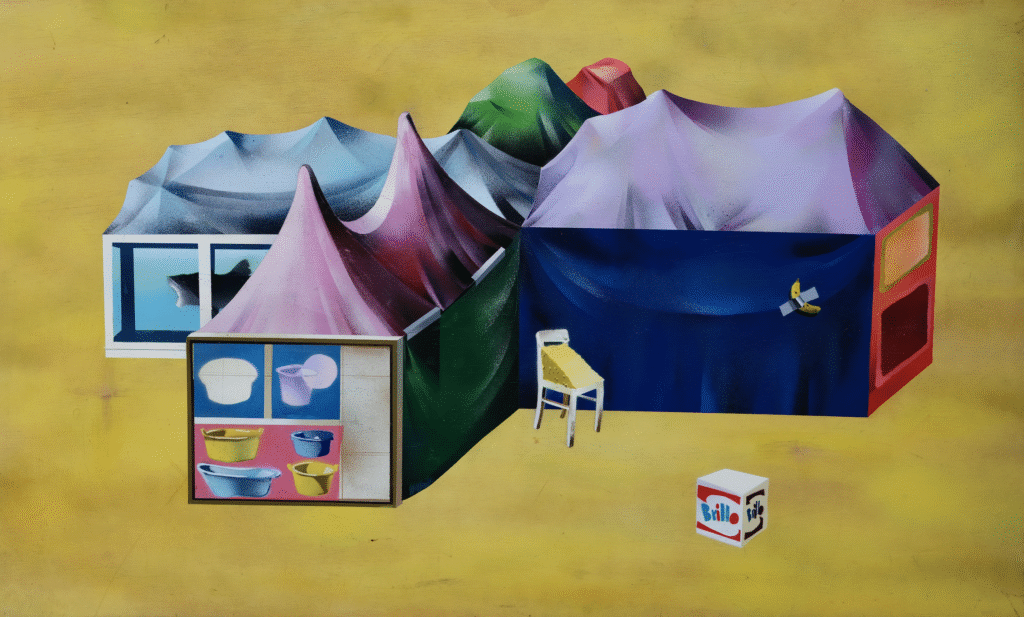
You’re also an author and illustrator of digital children’s books. Can you walk us through your typical process from idea to finished book?
It’s been 14 years since my last book, so my memory of the process is as clear as any hike I took back then! Publishing took a financial nosedive, much like the music industry, at the end of my run. My last publisher went bankrupt as my book was hitting shelves. The print run sold out, but they couldn’t afford to make more. I pitched a new idea in 2016, but the best offer I received was less than what I earned for my first book in 1993 (Mr. Lunch Takes a Plane Ride). At that point, I realized I wasn’t viable in publishing anymore.
How do you balance the surreal and the relatable in your illustrations?
I wish I had a precise method, but it’s all intuition. I follow whatever feels right in the moment.
What inspired you to get into children’s literature in the first place?
I’d lost interest in editorial work and wanted to create something that stood on its own merit. Instead of getting paid to draw something about how “the internet was going to be profitable,” I pivoted to making art that felt authentic. I knew it was time to move on when I once sold the same illustration to two different magazines, and neither noticed!
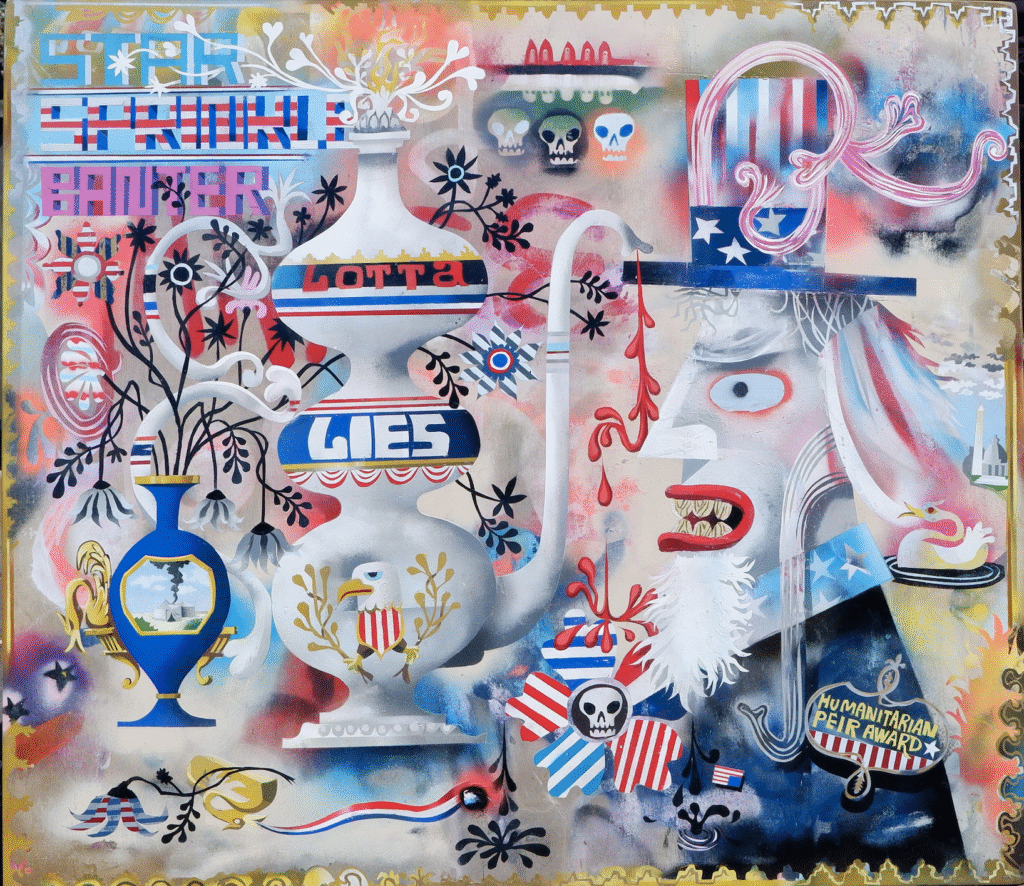
When writing for kids, how do you decide what kinds of themes or humor will resonate?
I never approached my work as “for kids.” When my children were young, I’d show them what I was working on and gauge their reactions. Kids are unfiltered and genuine; their input shaped my process.
What artists or illustrators inspire you, either from childhood or today?
I have my favorites: Ed Ruscha, Duchamp, and Sugimoto. I also follow new work constantly. With so much available online, it’s like trying to drink the ocean every day.
Do you draw inspiration from other media—music, film, games?
Absolutely. Anything created by humans that resonates with me—right down to messages painted on discarded mattresses—can spark inspiration.
J.OTTO SEIBOLD: Famous Paintings is at KP Projects in Los Angeles, California until 17th May, 2025.
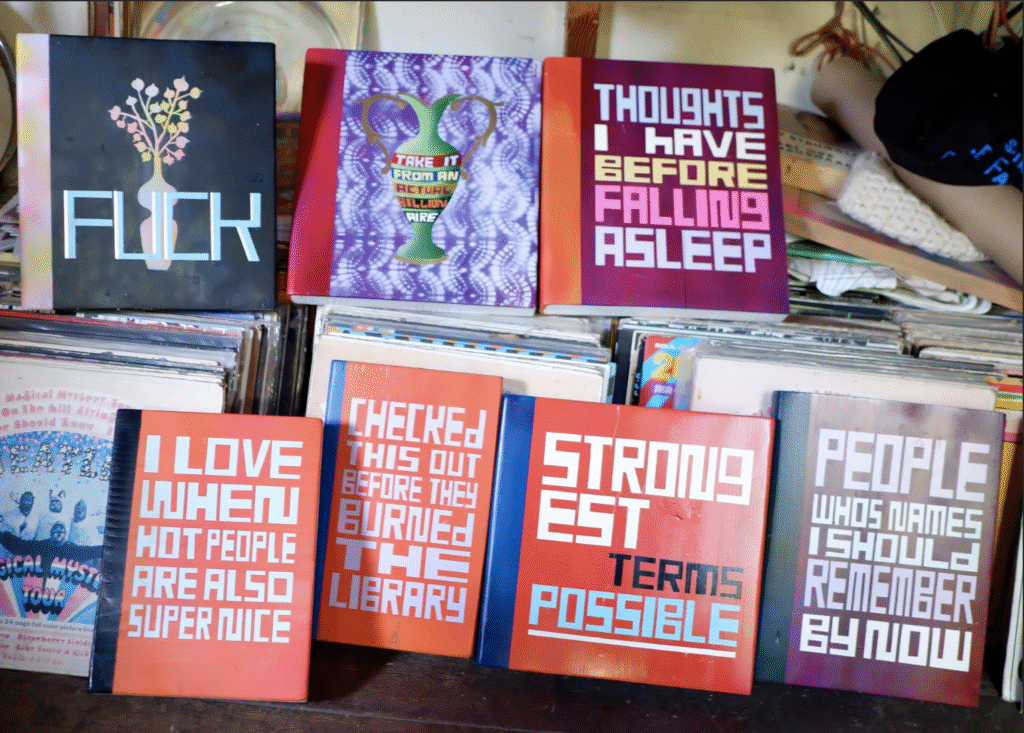
All images © J. Otto Seibold | KP Projects.


